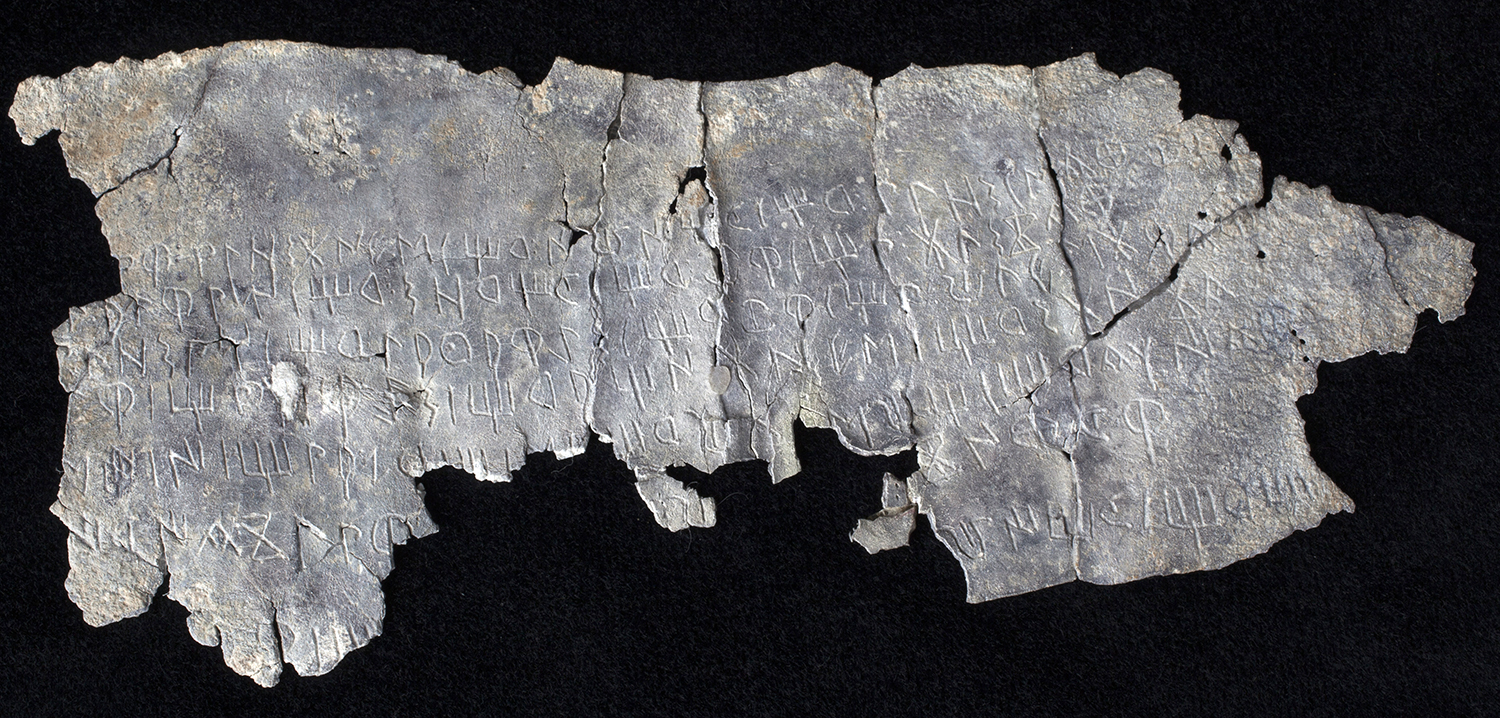
Lead
3rd c. BC
Castell, La Fosca (Palamós - Baix Empordà)
In 1980, during cleaning tasks in the Iberian settlement of Castell (La Fosca, Palamós), a sheet of lead bent in half was found out of archaeological context.
It bore a seven-line inscription consisting of a total of 175 letters that formed 24 words separated by lines of three points arranged vertically. It is the longest Iberian language text found so far in Catalonia. It is written in the so-called north-eastern or Levantine Iberian script, which extended from the south of France to the south of the Valencian Country and took in the interior of Aragon. It can be dated to the 12th century BC.
Currently, we are able to read the Iberian script in any of its variants, i.e. the various alphabetic and syllabic signs that make it up can be transcribed, but we cannot translate it. Its phonetics are also well known, partially because inscriptions in the Iberian language have also been found written in Greek characters. What we do not have for now is a bilingual text in the Iberian language and in Greek or Latin, the key that would definitively open the door to its understanding and to the world of which it was the expression.
Part of the inscription
The sheet is 17.5 cm long and 7.9 cm wide and between 0.6 and 0.8 mm thick. Part of the left side is missing due to it being less than carefully unrolled. This caused a significant loss of material in the lower middle part, severely affecting the last three lines of the inscription.
